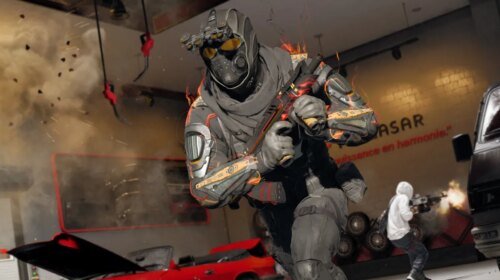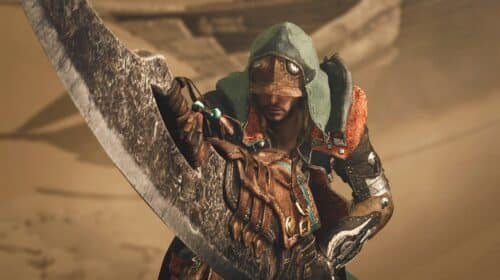Knights of Honor II: Sovereign guide — War and battles
Knights of Honor II: Sovereign is a game that will demand some expertise in building a military and waging a war. To aid you in this task, we have compiled this short guide. Read on to find out how to succeed in the war and battles in Knights of Honor II.
Knights of Honor II: Sovereign guide — War tips
Appointing a Marshall
Knights, your named nobles, can lead armies. Only Marshalls can lead by default — other knights have to learn at least a single Marshal skill.
Marshalls are the knight class specialized for war and leading troops:
- Marshall can lead armies of up to eight troops, others only lead five.
- Marshalls have no off-map duties. Knights like Merchants have off-map duties like maintaining trade with a country. Going to lead troops takes them away from this task, which is especially ruinous when you have established strong trade ties.
- Marshalls have the best access to military skills and thus boost their troops the most.
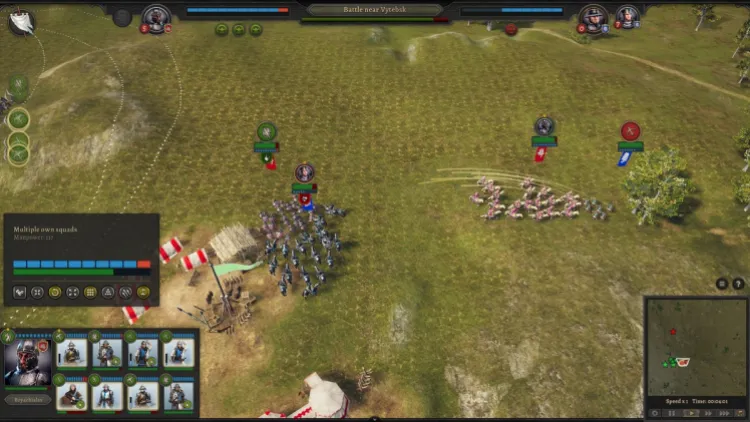
Marshals are a good source of cavalry. Screenshot by PC Invasion
When upgrading a Marshall’s skills, pick those that suit your play style and country’s access to units the most. Among secondary skills, the ones that give access to cheaper unit replenishment are always good.
Knights can buy up to four army upgrades. The basic ones increase supply carrying capacity or unit size. I prefer the latter, since you can often resupply in the field by pillaging. Marshalls with Logistics III and a country tradition of logistics can buy four upgrades for their army rather than one.
Building an army
You don’t need a knight to hire troops in a town. They will join the province the defense force when defending in a siege, but will not move on the campaign map. You need a knight to take them into their army. By default, any town can only train peasant mobs. They are very cheap to hire and maintain, but they’re also weak on the battlefield.
To train better troops, you need to construct a building:
- Village Militia not only increases defenses of the town, but also allows you to build Militia, which are better than peasants while also being relatively cheap.
- Barracks are a necessity for building any kind of decent troop, but not without further investment in upgrades
Barracks are best built in provinces that have at least a single castle feature as they synergize well. Fully upgraded Barracks allow you to build the entire light troops line: light infantry, light spearmen, light horsemen and bowmen, as well as catapults. Bowmen are a good early investment: militia and peasants can’t shoot and your knight provides you with a unit of elite heavy cavalry for flanking or harassing archers.
Royal Armory (and its upgrades) will be necessary to train the heavy varieties of troops, which are the best vanilla troops you can get. Depending on your start date, your country may have access to special troops — or lack access to certain default units. Example: 12th-century Lithuania has no heavy cavalry, but 13th century Lithuania trains the superior Boyar cavalry instead.
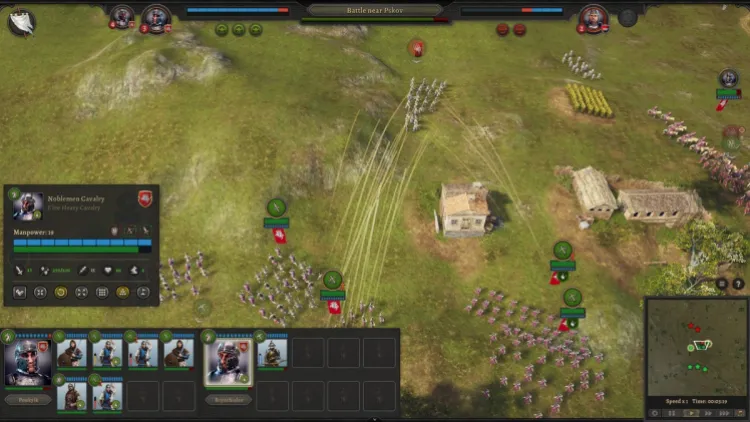
Focused fire from multiple bowmen units can whittle down units pretty well. Screenshot by PC Invasion
You can conquer provinces that grant access to special varieties of troops. Example: Scandinavian towns will allow you to train either regular Light Infantry or Viking Infantry which trades defenses for more attack.
Our personal preference is for armies that are 50% melee, 50% archers. Friendly fire for archers exists, but the impact is less noticeable than putting your troops into a disadvantageous position. Catapult is a good army upgrade as it outranges archers and at least used to be good for aggroing AI.
Knights of Honor II: Sovereign guide — Battles tips
Fighting a battle
During battles in Knights of Honor II, your army will be arrayed at one end of the battlefield, and the enemy’s at the other. There will be one or more capture points per army, represented by camps.
Sudden victory can be achieved by:
- Killing the last enemy general (destroying the entire cavalry unit).
- Capturing their capture points while preventing the enemy from doing the same to you.
Some quick tips for Knights of Honor II battles:
- Keep your troops in a line, with archers behind the melee units.
- Captured points are transferred to the new owner: rushing the enemy points without protecting your own will simply result in you trading map sides.
- On maps with hills in the middle, the AI pathfinding will send about ¼ of your forces on the wrong side – keep them all together.
- Spear beat cavalry, swords beat spears, cavalry beats swords.
- Archers are dangerous to infantry, but cavalry will eat them for lunch.
- Unit and force morale: some factors come from the campaign map (fighting on friendly lands, running out of supplies), others on the battlefield (outnumbered or flanked).
- Fixing units with infantry and then using cavalry to charge them in the flank or the rear is the best tactic.
- When a unit breaks, they immediately start running away from the battlefield and you can’t stop them. Their models change into white-shirted peasants and they become uninteractive
- If you lose, the army is wiped out and the general is either killed or captured.
- Retreats – both on the field and on the campaign map – will cause casualties, but that’s preferable to a complete wipe.
Fighting a siege
Siege battles add walls and towers to the map. The capture point of the siege defender are inside the fortifications. Initiative is a mechanic unique to sieges. The side that initiated the battle is on a timer — they lose if this runs out. To stop the timer, the forces have to actively engage the enemy and go after their objectives.
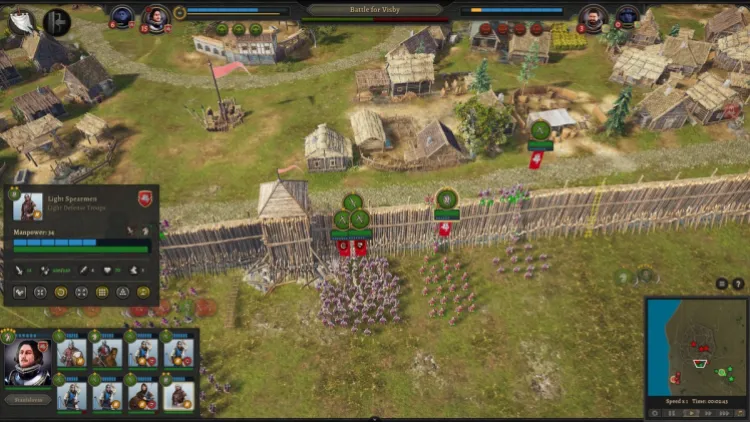
There are more graceful ways to crowd a wall. Screenshot by PC Invasion
Infantry always have ladders to scale the walls, where they can capture the automatically firing towers. Cavalry can’t climb walls, but they can capture unguarded/uncontested gates and let themselves in. You can task troops to go onto the walls and fight the enemy there, even if the pathing is rough.
Fighting a war
Once war is declared or joined in Knights of Honor II, any of your knights on missions to enemy countries will be imprisoned — and vice versa.
Up to two armies per side can fight in a battle. A battle can be autoresolved or commanded manually:
- Autoresolving takes a lot of campaign map time.
- Fighting manually in RTS happens instantaneously as far as campaign is concerned.
The game detects armies set to reinforce battles or sieges — this will be shown on the interface. Therefore, an army that would arrive in 200 seconds in the campaign map will arrive in 200 seconds on the battle map. This prevents sniping an enemy force with two of your own armies.
On replenishment: to replenish your units, you need to move the army to a friendly town that has enough of the local population. In addition to local pop, you have to pay gold and recruits from the levy pool. To replenish supplies, move to a friendly town has to have enough food stored and pay for the resupply.
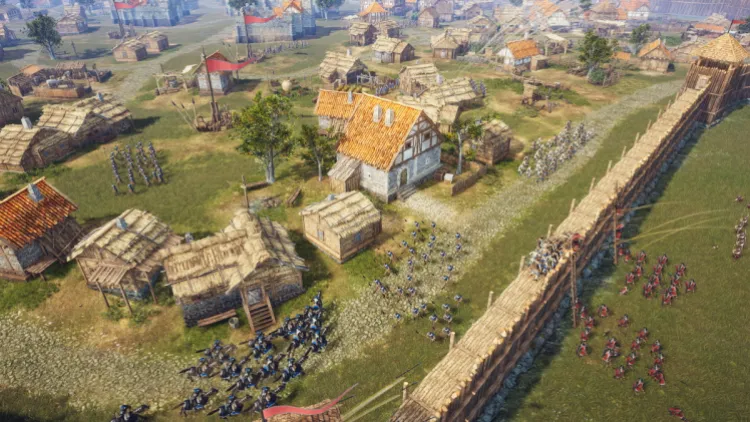
Image via Black Sea Games/THQ Nordic
There are two more ways to replenish supplies:
- A merchant knight may offer to organize a supply shipment. You have no control over when (or whether) you’ll get this suggestion, and it may still fail.
- You can gain supplies by sacking enemy villages/goods/etc.
Sacking enemy villages gains money, books, and supplies. What you get depends on the symbols shown over the villages on the campaign map. Gold coins means money, wheat means supplies, books mean books. Sacking villages goes in two phases: beating the defenders (not always present in enough numbers to cause casualties) and then the actual sack. You can cancel it at any time, but you will waste the progress.
Naval battles can only be simulated. Therefore, only skills, traditions, and building chains can influence them.
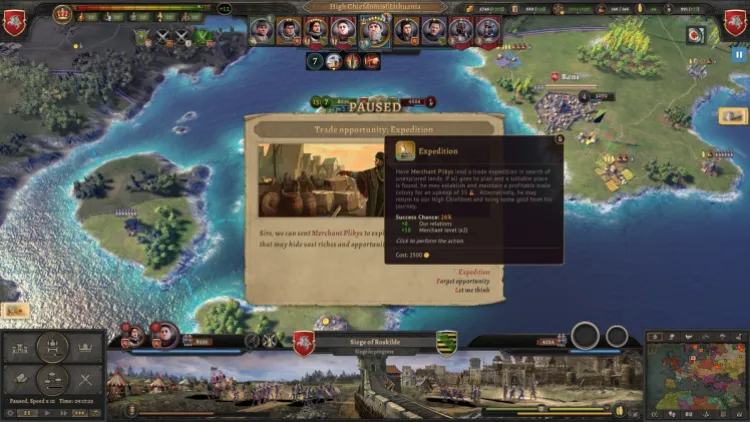
You can only launch the siege battle after whittling down either the enemy morale or defense level down to 50%. Screenshot by PC Invasion
When you click on a town or a castle, you can see a circle around it: that’s the range at which they’ll attack enemy armies with (ranged). Manage your armies so that they would move around these.
Rivers in hostile territory are an obstacle: armies will have to wait some time before crossing them.
After conquering a town, you have to choices: get an army to put down the resistance (hurts the economy and international relations, may fail) or have a religious knight adopt the population (expensive in books, money, and tradition, may fail, otherwise no downsides).
You can also wait for a rebellion to break out and take over the town, then beat the rebels in the field, though this option is mostly out of your control.
Rebels and Mercenaries
Mercenary bands rove the map, sometimes camping down near your towns. To interact with them, send a friendly army.
You can:
- Hire individual units of mercenaries: this is a good early source of heavy units if you have the money.
- Hire the entire army to fight in your war: the expensive option that gives you an AI ally, but much cheaper than buying all the units individually.
- Hire the entire army to crush rebels: cheaper option that gives you an AI ally that will immediately go after any rebels you face. Will leave service as soon as the last rebellion is crushed.




